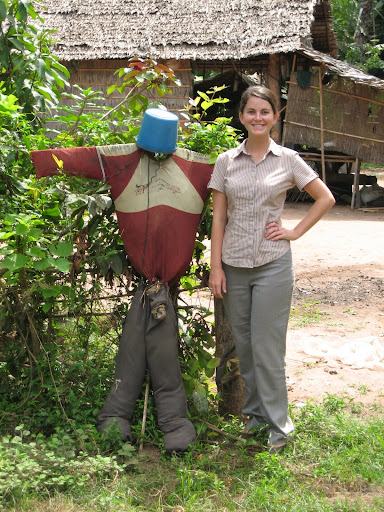
Something I definitely need to do more of here is to try the street food! In between surveys today, we stopped at a roadside stand because the fried frogs caught my coworkers' attention. Above, Cha'riya, a member of the survey team, displays her street food. Below is the full stall. You can see pig's ears, fried frogs with lemongrass stuffing on skewers, assorted fish and pickled things. I tried the frogs, and they weren't bad, but the stuffing was definitely the highlight. Earlier that day, I did get what looked and tasted like small waffles from a street vendor - all they needed was some blueberries or strawberries and I would've been in heaven! And three small waffles only cost about 12 cents. I think the frogs cost a bit more, something like a whole quarter!











